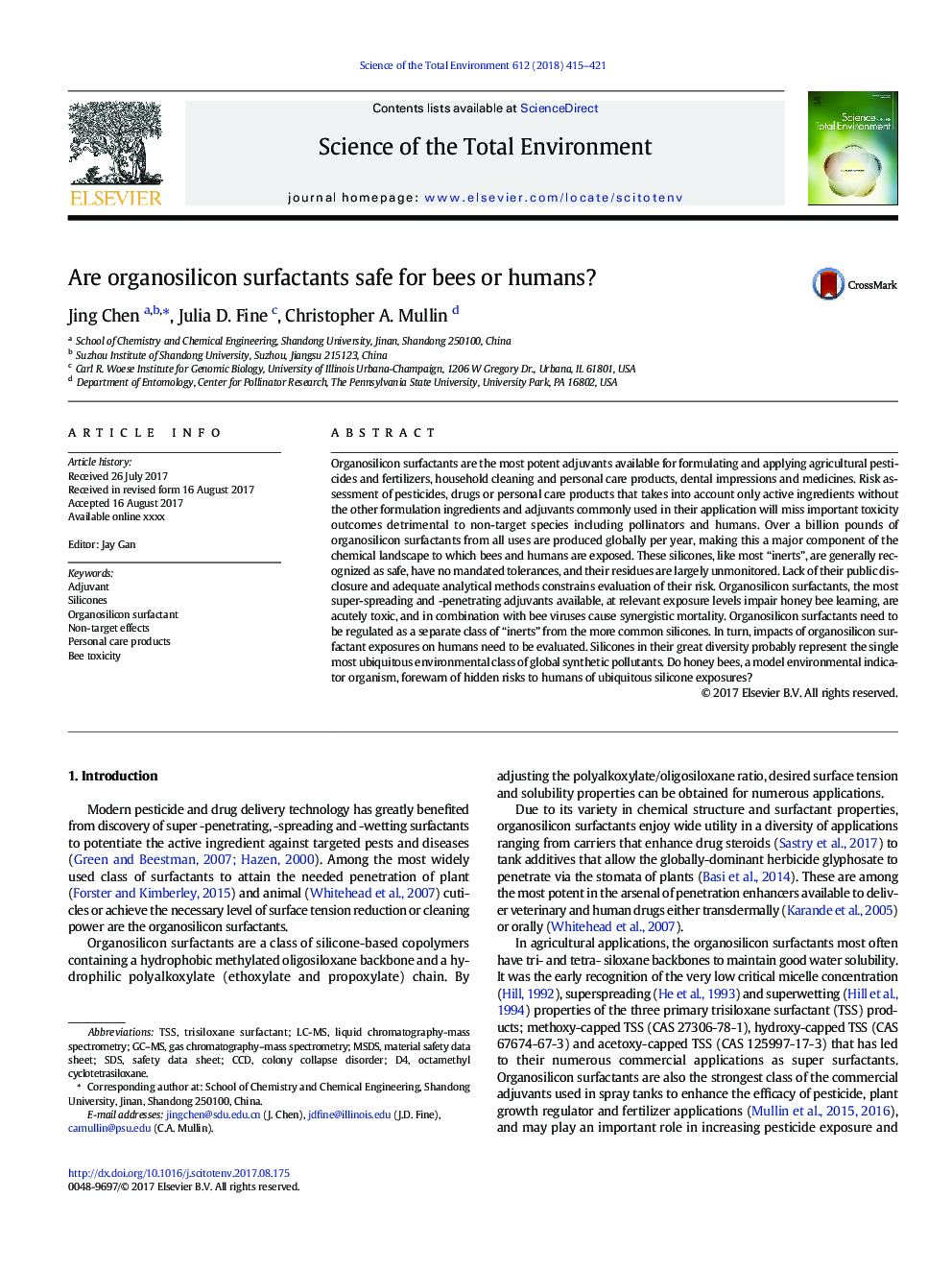| کد مقاله | کد نشریه | سال انتشار | مقاله انگلیسی | نسخه تمام متن |
|---|---|---|---|---|
| 5749899 | 1619691 | 2018 | 7 صفحه PDF | دانلود رایگان |
عنوان انگلیسی مقاله ISI
Are organosilicon surfactants safe for bees or humans?
ترجمه فارسی عنوان
آیا آلیاژهای رسوبی برای زنبورها یا انسان ها امن هستند؟
دانلود مقاله + سفارش ترجمه
دانلود مقاله ISI انگلیسی
رایگان برای ایرانیان
کلمات کلیدی
SDSCCDTSSLC-MSMSDsTrisiloxane surfactantGC–MS - GC-MSNon-target effects - اثرات غیر هدفColony collapse disorder - اختلال سقوط ColonyAdjuvant - ادجوانت، یاورSilicones - سیلیکونLiquid chromatography-mass spectrometry - طیف سنجی جرم کروماتوگرافی مایعgas chromatography–mass spectrometry - طیف سنجی جرم کروماتوگرافی گازPersonal care products - محصولات مراقبت شخصیMaterial safety data sheet - ورق ایمنی مواد
موضوعات مرتبط
علوم زیستی و بیوفناوری
علوم محیط زیست
شیمی زیست محیطی
چکیده انگلیسی
Organosilicon surfactants are the most potent adjuvants available for formulating and applying agricultural pesticides and fertilizers, household cleaning and personal care products, dental impressions and medicines. Risk assessment of pesticides, drugs or personal care products that takes into account only active ingredients without the other formulation ingredients and adjuvants commonly used in their application will miss important toxicity outcomes detrimental to non-target species including pollinators and humans. Over a billion pounds of organosilicon surfactants from all uses are produced globally per year, making this a major component of the chemical landscape to which bees and humans are exposed. These silicones, like most “inerts”, are generally recognized as safe, have no mandated tolerances, and their residues are largely unmonitored. Lack of their public disclosure and adequate analytical methods constrains evaluation of their risk. Organosilicon surfactants, the most super-spreading and -penetrating adjuvants available, at relevant exposure levels impair honey bee learning, are acutely toxic, and in combination with bee viruses cause synergistic mortality. Organosilicon surfactants need to be regulated as a separate class of “inerts” from the more common silicones. In turn, impacts of organosilicon surfactant exposures on humans need to be evaluated. Silicones in their great diversity probably represent the single most ubiquitous environmental class of global synthetic pollutants. Do honey bees, a model environmental indicator organism, forewarn of hidden risks to humans of ubiquitous silicone exposures?
ناشر
Database: Elsevier - ScienceDirect (ساینس دایرکت)
Journal: Science of The Total Environment - Volume 612, 15 January 2018, Pages 415-421
Journal: Science of The Total Environment - Volume 612, 15 January 2018, Pages 415-421
نویسندگان
Jing Chen, Julia D. Fine, Christopher A. Mullin,
